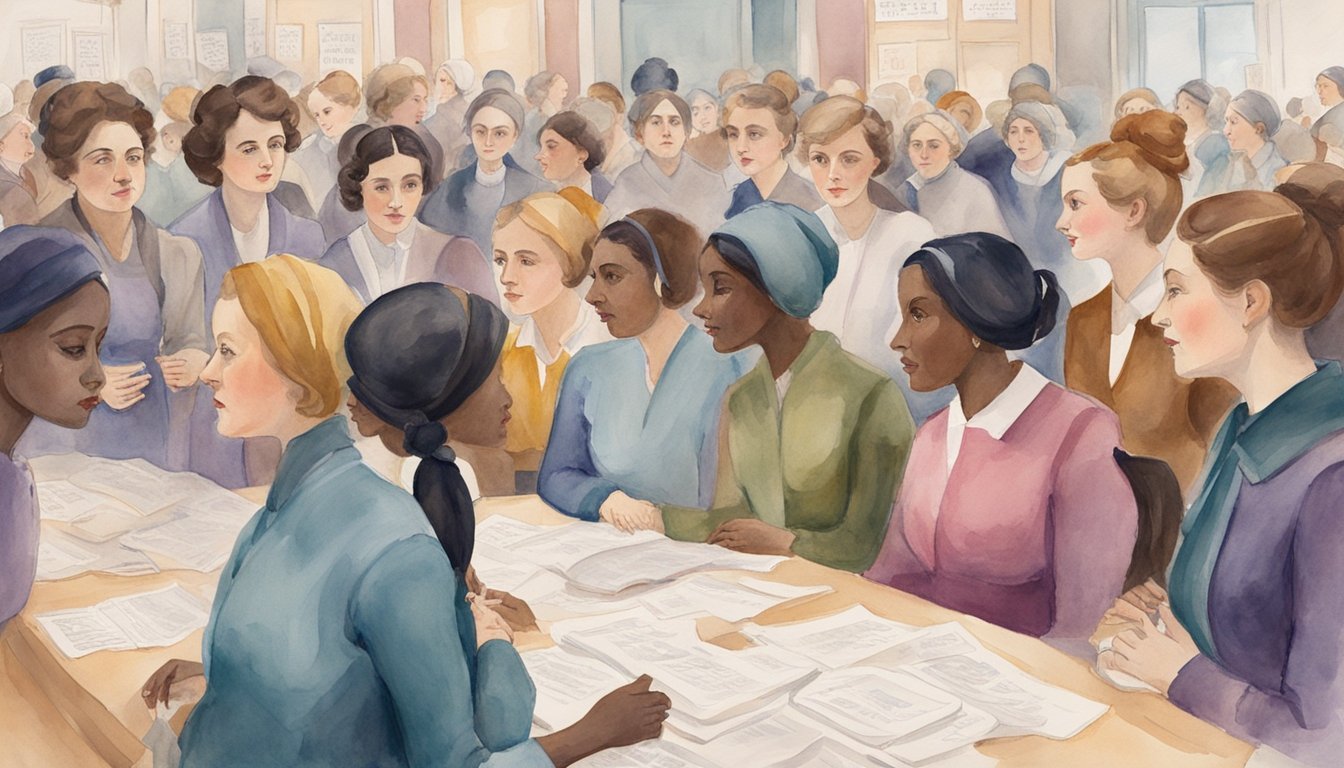Origins of Women’s Suffrage Movement
Early Campaigns and Conventions
The Women’s Suffrage Movement began in the mid-19th century when women started campaigning for their right to vote in the United States. One of the most significant milestones in the movement was the Seneca Falls Convention in 1848. The convention was led by Elizabeth Cady Stanton and Lucretia Mott, who were both active members of the abolitionist movement. They drafted the Declaration of Sentiments, a document inspired by the Declaration of Independence, which declared that women should have equal rights, including the right to vote.
Various campaigns, court battles, petitions to Congress, and protests ensued, eventually leading to significant progress in the movement. For example, Wyoming Territory granted women the right to vote in 1869, making it the first U.S. territory or state to do so.
Key Figures and Associations
Several key figures played a significant role in the Women’s Suffrage Movement. Besides Stanton and Mott, Susan B. Anthony was another prominent activist during this time. She helped to found the National Woman Suffrage Association (NWSA) in 1869 alongside Stanton. The NWSA focused on amending the U.S. Constitution to provide women the right to vote.
In the same year, the American Woman Suffrage Association (AWSA) was formed by Lucy Stone, another influential figure. AWSA followed a different strategy, focusing on securing women’s suffrage on a state-by-state basis through the amendment of state constitutions.
The two organizations eventually merged in 1890 to form the National American Woman Suffrage Association (NAWSA), with Elizabeth Cady Stanton as the first president. This merger helped to unify the movement, and NAWSA played a crucial role in the eventual ratification of the 19th Amendment, which granted women the right to vote throughout the United States in 1920.
The Path to Ratification of the 19th Amendment

Strategies and Milestones
The Women’s Suffrage Movement in the United States was a long and arduous battle that began in the mid-19th century. To achieve their goals, suffragists employed various strategies, including legislative initiatives, civil actions, and public demonstrations. Key milestones on the path to ratification included the formation of the National American Woman Suffrage Association (NAWSA), led by suffrage leaders such as Susan B. Anthony and Carrie Chapman Catt.
During the final years of World War I, suffragists upped their game and began picketing outside the White House, a tactic initially led by activist Alice Paul. The protesters endured harassment, arrests, and hunger strikes. As public support for suffrage increased, so did the pressure on President Woodrow Wilson to amend the Constitution.
Legislation and Civil Actions
Several amendments and acts were proposed and implemented to bring about voting rights for women. Though the 14th and 15th Amendments established citizenship rights and the right to vote regardless of race, they did not grant suffrage for women, fueling the need for a specific amendment addressing gender.
As a result, the 19th Amendment was introduced in Congress. Finally, on June 4, 1919, it was passed by the House of Representatives and the Senate. However, the ratification process required 36 states to approve it. The battle moved to a state-by-state basis as suffrage organizations focused on influencing state legislatures. Tennessee was the final state needed for ratification, and on August 18, 1920, they narrowly approved the amendment, making it part of the U.S. Constitution.
Notably, women of color faced unique challenges in their fight for suffrage. The ratification of the 19th Amendment did not immediately remove all barriers to voting for them, and the suffrage movement had to continue for many years to overcome racial inequalities (source).
During this period, new organizations such as the League of Women Voters were established to educate women on their voting rights and civic duties. In the years that followed, suffrage activists continued their work, striving for equality and ensuring all citizens had the right to vote.

